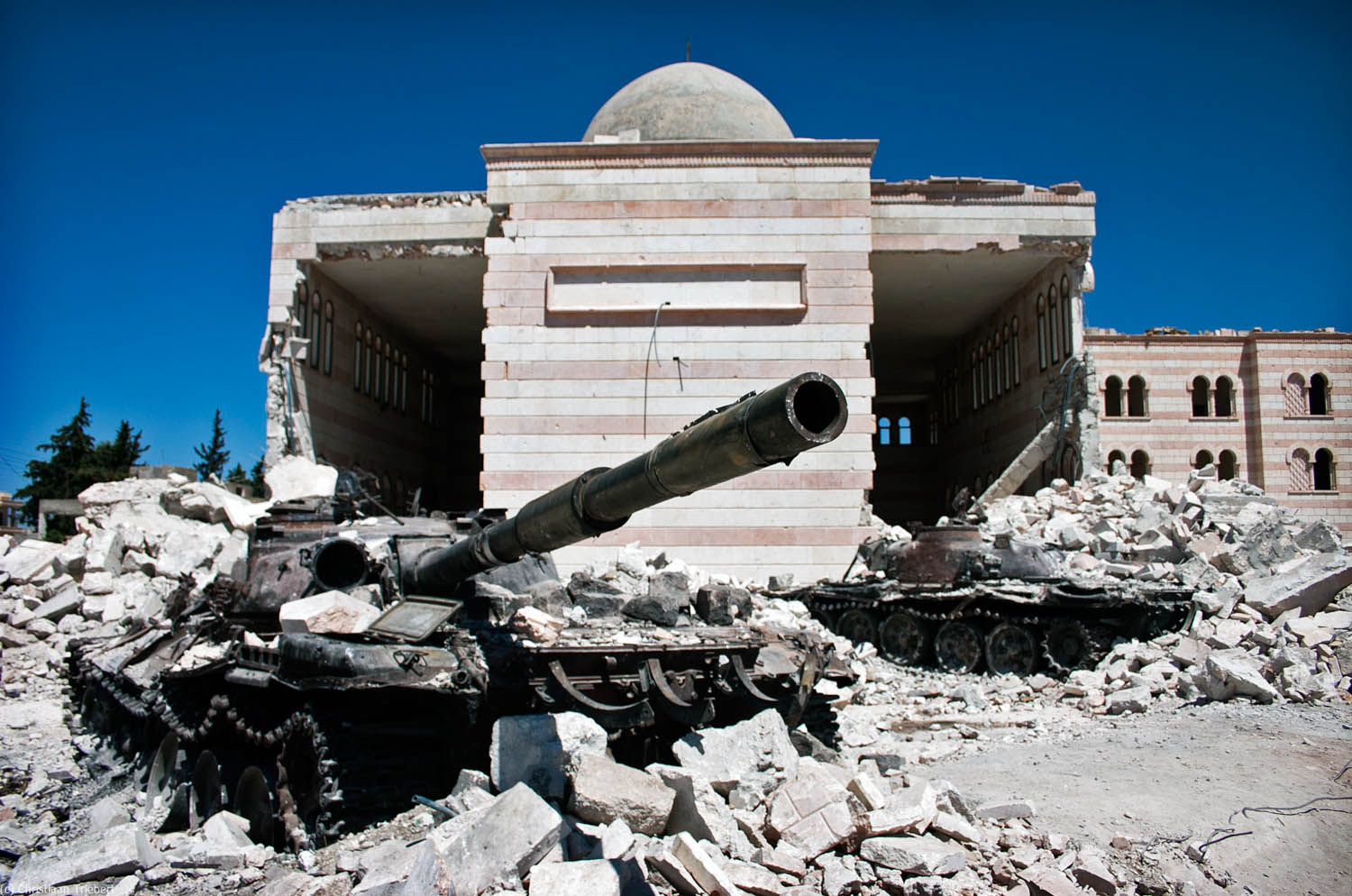By Katie Ellington, Staff Writer
Russian military forces carried out another aerial attack last week in Syria, following the transport of a Russian aircraft to an air base in western Iran.
Sukhoi-34 strike aircraft and Tupolev Tu-22M3 bombers arrived at the Hamedan Air Base last Monday and were used to carry out attacks on the Aleppo, Idlib and Deir al-Zour provinces the following day. A statement by the Russian Defense Ministry said the air strikes killed militants from IS and Jabhat Fateh al-Sham, another jihadist group, in addition to destroying ve stocked warehouses, three command centers and jihadist training camps. Local groups estimate that 27 civilians died in the attack, according to the BBC.
While both Russia and Iran have provided support to the military forces of Syrian President Bashar al- Assad, this was the rst time that Iran has permitted Russia to use its military bases since World War II. e temporary use of the bases puts Russian aircraft closer to their targets and allows the aircraft to carry more munitions; however, some experts suggest Moscow may be trying to get Washington’s attention.
“Russia’s use of an Iranian base represents a turning point in Russia’s relations in the Middle East,” Fawaz Gerges, a professor of international relations at the London School of Economics, told the LA Times. “It
sends a powerful message to the United States and regional powers that Russia is here to stay.”
Russia’s actions have not come without criticism. According to the BBC, the New York-based group Human Rights Watch (HRW) hinted last Tuesday that the Russian and Syrian governments had been violating international law by using incendiary weapons to carry out attacks in areas with high civilian populations. Russia has denied these claims; however, HRW says Russia conducted at least 18 incendiary weapon attacks on rebel- held areas between June and August.
U.S. State Department Spokesman Mark Toner said that Russia’s operations in Iran could violate a United Nations (UN) resolution that bans the supply, sale or transfer of combat aircraft to Iran. Russian foreign minister Sergei Lavrov addressed this claim at a news conference in Moscow, saying that the aircrafts “are being used by Russia’s air force with Iran’s agreement as a part of an anti-terrorist operation at the request of Syria’s leadership.”
On ursday, the Syrian government launched another aerial attack in Hasaka, a city caught in the cross re between the government and the Kurds, a moderate rebel group that opposes the Assad regime. e attack continued on Friday, prompting the U.S. military to send aircraft to protect U.S. Special Forces in the area; however, when U.S. military planes arrived, the Syrian aircraft were concluding their attack and turned to leave.
Civilian casualties have been a major issue throughout the Syrian Civil War. e Syrian Monitor for Human Rights, a U.K.-based group, estimates that air strikes and shelling in and around Aleppo have killed 422 civilians in the last month alone. U.S. Presidential candidates Hillary Clinton and Donald Trump have voiced their opposing solutions for the problem.
Clinton has advocated for the entry of refugees into the U.S., as well as continuing support for Arab and Kudish forces and “intensifying” the current U.S. air campaign against IS. Trump favors creating safe zones over allowing Syrian refugees into the U.S. and has voiced his support for Russia’s bombing campaign against ISIS.


